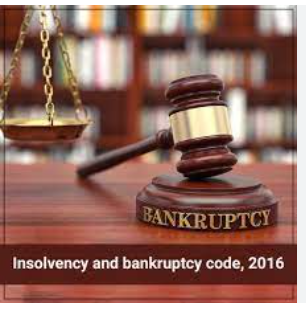Insolvency and Bankruptcy Code 2016
The Insolvency and Bankruptcy Code, 2016 (IBC) is a comprehensive law enacted by the Parliament of India to consolidate and amend the laws relating to reorganisation and insolvency resolution of corporate persons, partnership firms, and individuals in a time-bound manner. The Code was introduced to address the issue of mounting non-performing assets (NPAs) in the Indian banking system and to provide a streamlined process for the resolution of insolvency and bankruptcy cases.
Background
Prior to the introduction of the IBC, India’s insolvency and bankruptcy framework was fragmented and governed by multiple laws, such as the Sick Industrial Companies Act (SICA), 1985, the Recovery of Debts Due to Banks and Financial Institutions Act, 1993, and the Securitisation and Reconstruction of Financial Assets and Enforcement of Security Interest Act (SARFAESI), 2002. These laws were often criticised for being ineffective, time-consuming, and leading to a low recovery rate for creditors. The need for a comprehensive and efficient insolvency and bankruptcy framework was long-felt, and the IBC was introduced to address these concerns.
Key Features
The Insolvency and Bankruptcy Code, 2016, has several key features that distinguish it from the previous insolvency and bankruptcy laws in India:
- Time-bound process: The IBC mandates a time-bound process for the resolution of insolvency and bankruptcy cases, with a maximum of 180 days for the completion of the Corporate Insolvency Resolution Process (CIRP), extendable by a further 90 days in exceptional cases.
- Insolvency professionals: The Code introduces the concept of Insolvency Professionals (IPs) who are licensed and regulated by the Insolvency and Bankruptcy Board of India (IBBI). IPs play a crucial role in the insolvency resolution process, acting as intermediaries between the debtor and creditors.
- Insolvency and Bankruptcy Board of India (IBBI): The IBBI is the regulator established under the IBC to oversee the insolvency and bankruptcy process, regulate insolvency professionals, and develop and enforce regulations for the smooth functioning of the insolvency and bankruptcy ecosystem.
- Creditor-driven process: The IBC shifts the balance of power from debtors to creditors, making the insolvency resolution process creditor-driven. The Committee of Creditors (CoC) is empowered to make key decisions regarding the resolution of the corporate debtor, including the approval of resolution plans.
- Priority of claims: The Code establishes a clear order of priority for the distribution of proceeds from the liquidation of the corporate debtor’s assets. Secured creditors have the highest priority, followed by unsecured creditors, and then equity shareholders.
Impact
Since its implementation, the Insolvency and Bankruptcy Code has had a significant impact on the Indian economy and the resolution of non-performing assets. As of December 2020, the IBC had helped resolve insolvency and bankruptcy cases involving a total of Rs. 1.58 lakh crore, with an average recovery rate of 43%. The Code has also led to a significant improvement in India’s ranking in the World Bank’s Ease of Doing Business index, with the country’s rank in the ‘Resolving Insolvency’ parameter improving from 136 in 2016 to 52 in 2020.
Amendments
The Insolvency and Bankruptcy Code has undergone several amendments since its enactment to address various challenges and improve its effectiveness. Some of the key amendments include:
- The Insolvency and Bankruptcy Code (Amendment) Act, 2018: This amendment introduced the concept of a ‘resolution plan’ and provided for the withdrawal of an insolvency application with the approval of 90% of the Committee of Creditors.
- The Insolvency and Bankruptcy Code (Amendment) Act, 2019: This amendment provided for the resolution of insolvency cases of financial service providers and introduced a separate chapter for the resolution of individual insolvency.
- The Insolvency and Bankruptcy Code (Amendment) Act, 2020: This amendment introduced a pre-packaged insolvency resolution process for micro, small, and medium enterprises (MSMEs) to provide a faster and more cost-effective resolution process for smaller companies.
The Insolvency and Bankruptcy Code, 2016, has been a landmark reform in India’s insolvency and bankruptcy landscape. The Code has provided a streamlined and time-bound process for the resolution of insolvency and bankruptcy cases, improved the recovery rate for creditors, and enhanced India’s ease of doing business. While challenges remain, the IBC has been a significant step towards creating a more efficient and effective insolvency and bankruptcy ecosystem in India.


